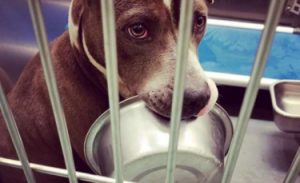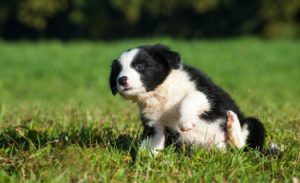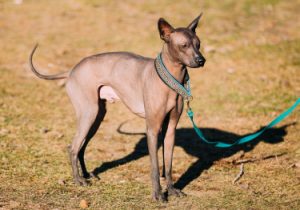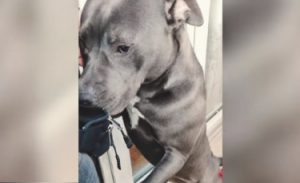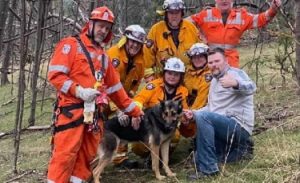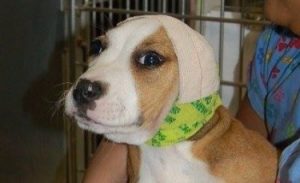Other names: Austrian Brachet, Tyrolean Hound, Tiroler Bracke
The Tyrolean Brachet is a medium-sized hound, of strong constitution with a developed musculature. Harmoniously built, the Tyrolean Brachet is a little longer than it is tall. Its silhouette is therefore writable in a rectangle.
<!–
–>
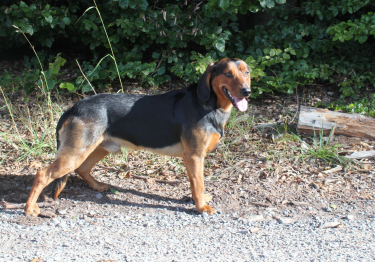
| Short | |
| Austria | |
| Average | |
| Long |
| Sex | Weight | Cut |
|---|---|---|
| Female | From 18 kg to 20 kg | From 42 cm to 48 cm |
| Male | From 18 kg to 20 kg | From 44 cm to 50 cm |
History of the breed
The Tyrolean Brachet breed is very old . A descendant of the Celtic scent hound , it was one of Emperor Maximilian I’s favorite hunting dogs in the early 16th century. The first pure breeding of Brachet Tyrolien began around 1860 in its region of origin, the Austrian Tyrol . Its first standard was developed in 1896 and its official recognition was confirmed 12 years later. In 1944, it was decided to no longer include the small-sized variety in its standard. The Tyrolean Brachet breed was definitively recognized by the Fédération Cynologique Internationale (FCI) on October 8, 1954.
Physical features
His coat: double (presence of undercoat) and dense
Its color: fawn (red, deer red to red-yellow), black and tan (black coat with tan markings on the limbs, chest, belly and head) or tricolor (black and tan with white markings on the chest , stomach, feet and limbs).
Its head: the skull is broad, lean, slightly rounded. The stop is marked. The nose is black, the muzzle moderately high and straight.
His ears: enough broad, of high attachment, rounded towards their end.
His eyes: rather large and dark brown in color.
His body: slightly longer than high. The withers well set out, the back straight and fairly wide, the croup slightly sloping and long. The chest well let down and the belly slightly raised.
Its tail: long, set high. Ideally in a brush with a tight hair, carried high when the dog is in action.
Behavior and character
| Affectionate | |
|---|---|
| Calm | |
| Protective | |
| Independent | |
| Hunter | |
| Barks / howls |
Behavior with others
| Cohabitation with children | |
|---|---|
| Sociable with other animals | |
| Love strangers |
The Tyrolean Brachet has all the qualities of a hunting dog , distinguishing itself when it comes to forcing the hare and the fox , but also looking for blood to find any type of game in the forest or in the mountains. With a very fine sense of smell and a remarkable sense of direction , the Tyrolean Brachet is passionate, enduring and autonomous in hunting action. Although docility is not his strong point, this dog exhibits a well-balanced temperament . At home, he is very attached to his master and his family . His natural vigilance makes him a pretty decent keeper .
Education…
It is essential to ensure that the dog is introduced to the recall early enough . Like any hunting dog, the Tyrolean Brachet is not particularly docile and therefore requires firm and early education. However, we will not seek the balance of power, but simply to inculcate the basic educational rules.
The Tyrolean Brachet
is it right for you? Take the test!
Education
| Clever | |
|---|---|
| Obedient |
Living conditions
| Suitable for apartment living | |
|---|---|
| Good for new masters | |
| Love it hot | |
| Love the cold |
Health
| Solid | |
|---|---|
| Ease of gaining weight |
The Tyrolean Brachet is a healthy dog. Robust and resistant, it has no particular predisposition to disease. Its double coat gives it a fairly good protection against the cold and bad weather.
Hypoallergenic breed
No
Litter size
NC
To protect you from these risks and insure your companion in the event of health problems, Woopets recommends Brachet Tyrolien dog insurance .
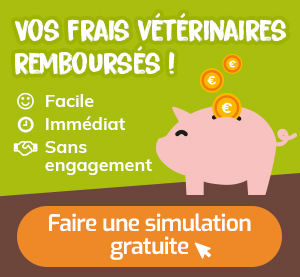
function showAssuranceForm () {var siteReferer = var id_race_association = ”; //console.log(id_race_association);success: function (html) {}});}document.addEventListener (‘DOMContentLoaded’, () => {$ (‘# assuranceModalBanner’). on (‘show.bs.modal’, function (event) {showAssuranceForm ();});});
Life expectancy
The life expectancy of a Tyrolean Brachet is, on average, less than 0 years.
Calculate the human age of your Tyrolean Brachet!
To choose… 1 year 2 years 3 years Four years 5 years 6 years 7 years 8 years 9 years 10 years 11 years old 12 years 13 years 14 years old 15 years old 16 years old 17 years 18 years old 19 years old 20 years 21 years old
Maintenance and hygiene
| Ease of maintenance | |
|---|---|
| Cost of maintenance | |
| Hair loss |
| Drool level | |
|---|---|
| Ease of grooming |
The Tyrolean Brachet requires only basic maintenance , but it should be done on a regular basis.
Exits…
The Tyrolean Brachet needs a lot of exercise to get active. Enduring and having a lot of energy , he cannot be satisfied with short walks . Long and frequent outings are recommended.
Hygiene…
Regular brushing helps maintain the cleanliness and condition of your dress, especially after outings in the forest. His ears should be inspected systematically after each of these hikes.
Price and budget
Purchase price
Mini
Max € 500
800 €
The purchase price of a Tyrolean Brachet is between € 500 and € 800.
Annual maintenance cost
Mini
NC Maxi
NC
The annual maintenance cost of a Tyrolean Brachet is between NC and NC.
No name is currently proposed. Use our tool to find the name of your Tyrolean Brachet!
Want the best for your dog?
Create tailor-made food for your Tyrolean Brachet
I discover !
PROMO -30% | Delivered to you!

Physical activity
| Athletic | |
|---|---|
| Energy level | |
| Potential to play |
Others
| Master character <span class="btnTooltip qTip2" title="- Calm: the master must be gentle and know how to show patience. – Active: the owner must be energetic and dynamic to live in harmony with his dog. – Hyperactive: the owner must be stimulating and very restless to suit the temperament of his dog.”> |
Calm |
|---|


